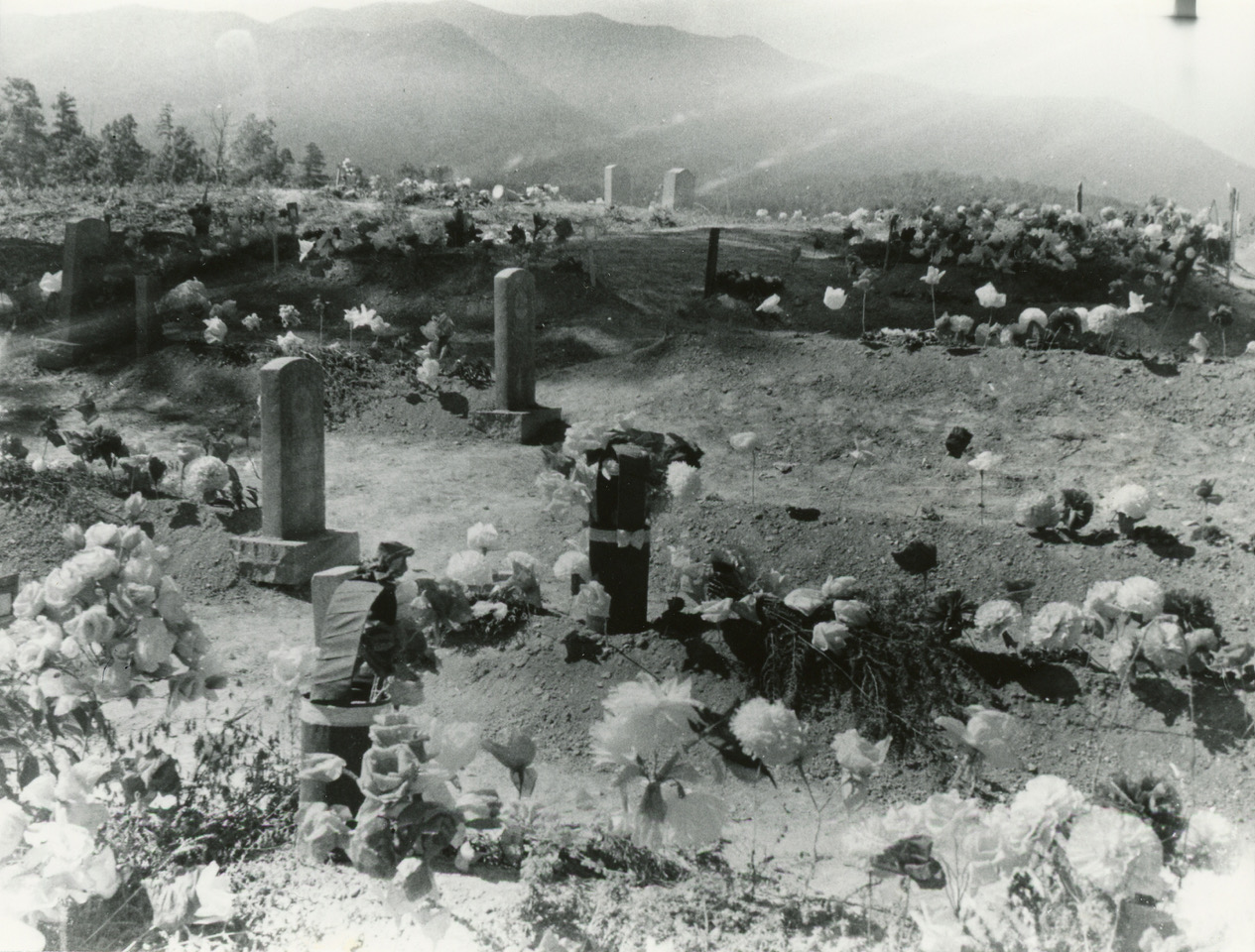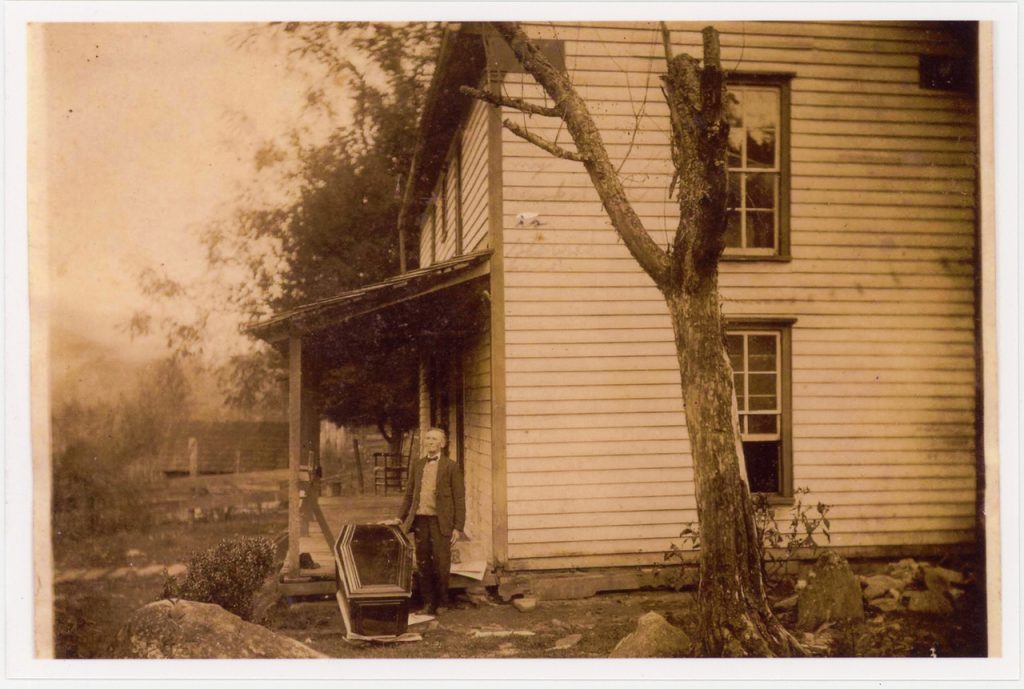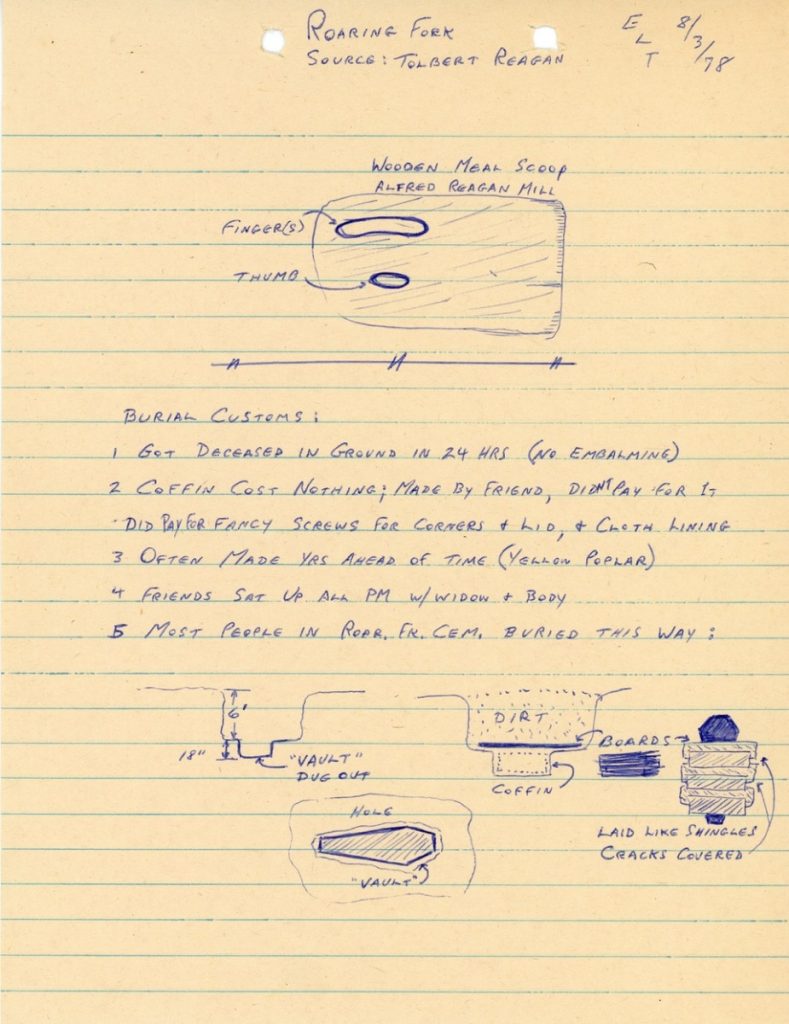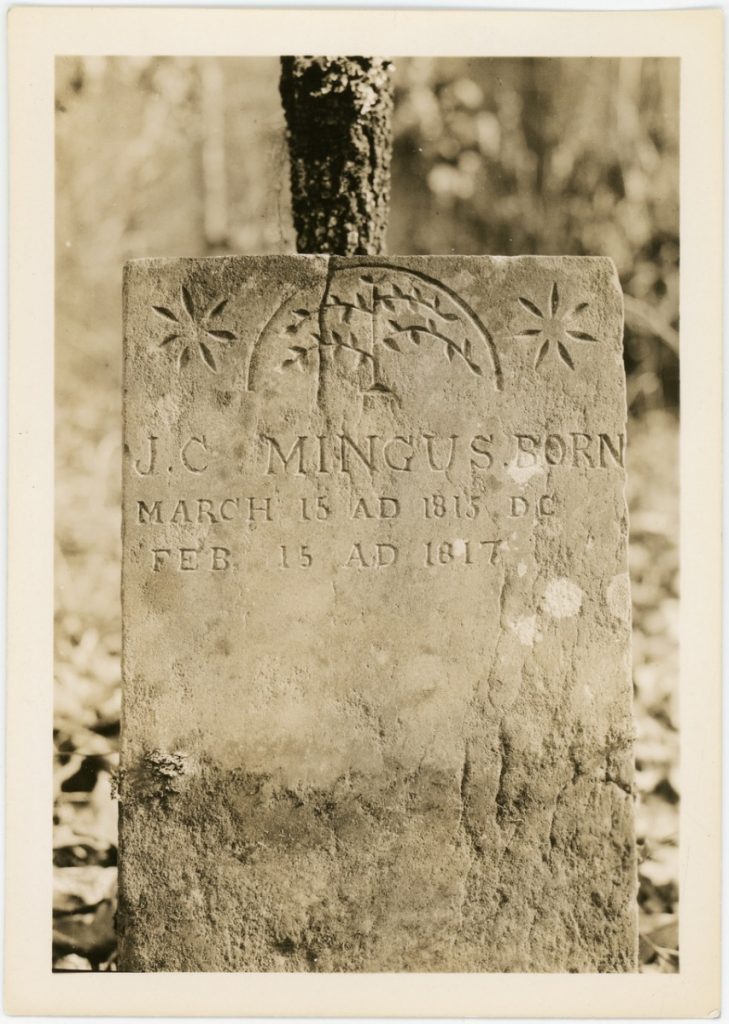
Life in the Great Smoky Mountains of Southern Appalachia was never easy. Before the establishment of the park, many families lived a hard scrabble existence, working close to the land to make a life. In times of plenty and in times of want the specter of death was ever present. Disease and accident claimed the lives of mountaineers regularly. Limited medical knowledge and access to doctors resulted in stillborn babies or mother and child perishing during childbirth. While these losses were devastating for the families, the communities where these families lived suffered as well. In communal suffering, families, friends, and neighbors came together in order to help and heal.
When death came to a mountain family, the community reached out to help the bereaved. According to Charley Myers from Cades Cove, neighbors would help prepare the dead for burial. The deceased was washed, their hair combed, and they were dressed in their best clothes. The body was then placed in a coffin and laid out in the family home. Neighbors brought food to share with the family as well as those friends and neighbors who would sit up with the body the night before the funeral.

Those “waking” the body would sing hymns, pray and share stories about the deceased. The wake also had a more practical purpose. In the time before embalming, a cloth soaked in camphor or soda water was kept over the face of the dead to prevent the skin from blackening. Greenbrier native and former NPS Ranger Glenn Cardwell recalled the smell of the camphor used to prepare his infant brother for burial as “the pungent odor of something unpleasant that burned my nostrils.” This cloth had to be changed out constantly, with this act being performed throughout the night by those attending the dead.
While the body was prepared for burial, it fell to other neighbors to construct a coffin. Many families kept lumber on hand for the eventuality of making a casket. Called coffin lumber, the wood was kept in the attic, milled and ready for use. The simple box, often made from poplar wood, was lined with cotton bating and white muslin or chambray was tacked over this. Because there was no time to paint or stain the rough exterior of the coffin, the outside was covered in black cotton cloth. If the family could afford to, or if they were available, shiny tacks or other more ornate fasteners would be used in constructing the coffin.
North Carolinian Ed Conner went further than most. Rather than simply store his coffin lumber in the attic, he took the additional step of growing it himself. As a young man Conner became a Christian, and on the spot where he accepted Christ he planted a walnut tree. In 1918 Conner returned, felled the tree, and moved it by train to Smokemont, where he made the tree into a casket. More elaborate than most, this coffin reflects a high degree of woodworking skill. Conner went so far as to pose for a photograph next to his handiwork.

Another funerary practice involved placing coins, pennies or nickels on the eyes of the deceased to keep them closed. Lucinda Ogle, Wiley Oakley’s daughter, recalled how as a child, a friend lamented the fact that a young man in their community had been buried with a penny on each eye and how every time she passed the boys grave she thought of how many pencils those two pennies could buy.
Burial usually occurred within 24 hours of death. Bodies were either interred in the family cemetery or in the church graveyard. Rocky ground, weather and seasonal conditions often made this a difficult task. In the Roaring Fork area of Gatlinburg a special procedure was used to protect the interred bodies from predators and to help protect the community from the unembalmed remains. A hole 6 feet deep and wider than the coffin was dug, and at the bottom of that a vault the same dimensions of the coffin was excavated. The coffin was placed in the vault, covered with layers of board and rocks, and then the grave was filled in. Over time the ground would settle and sink. Each year the families would return and cover the graves with fresh earth and decorate them with flowers.

During the graveside service hymns were sung, psalms read and flowers were placed on the grave. Before the availability of plastic flowers it was customary for the community to make paper flowers. Constructed of crepe paper and dipped in wax, these flowers along with wild flowers and greenery decorated the new grave. Headstones and footstones were erected as well. Made of slate or wood, these markers contained nothing more than scratched initials while some provided more detailed information and elaborate decoration.
Life was hard for people in these mountains, but community helped make things bearable. Friends and neighbors could be counted on to help get crops into the ground or bring in the harvest when someone was injured, celebrate a marriage or birth, and provide aid and comfort in a time of grief. Though we often think of these people as rugged and self-sufficient, need and bounty, love and loss brought them together as a community.
Mike Aday is the librarian-archivist at the Collections Preservation Center, where artifacts from Great Smoky Mountains National Park are housed. The Collections Preservation Center existence was partly made possible through funding from Great Smoky Mountains Association. Email Mike HERE or call M-F, 9 a.m. to 3 p.m. at 865-448-2247.
Subscribe to get the latest posts sent to your email.
The Great Smokies Welcome Center is located on U.S. 321 in Townsend, TN, 2 miles from the west entrance to Great Smoky Mountains National Park. Visitors can get information about things to see and do in and around the national park and shop from a wide selection of books, gifts, and other Smokies merchandise. Daily, weekly, and annual parking tags for the national park are also available.